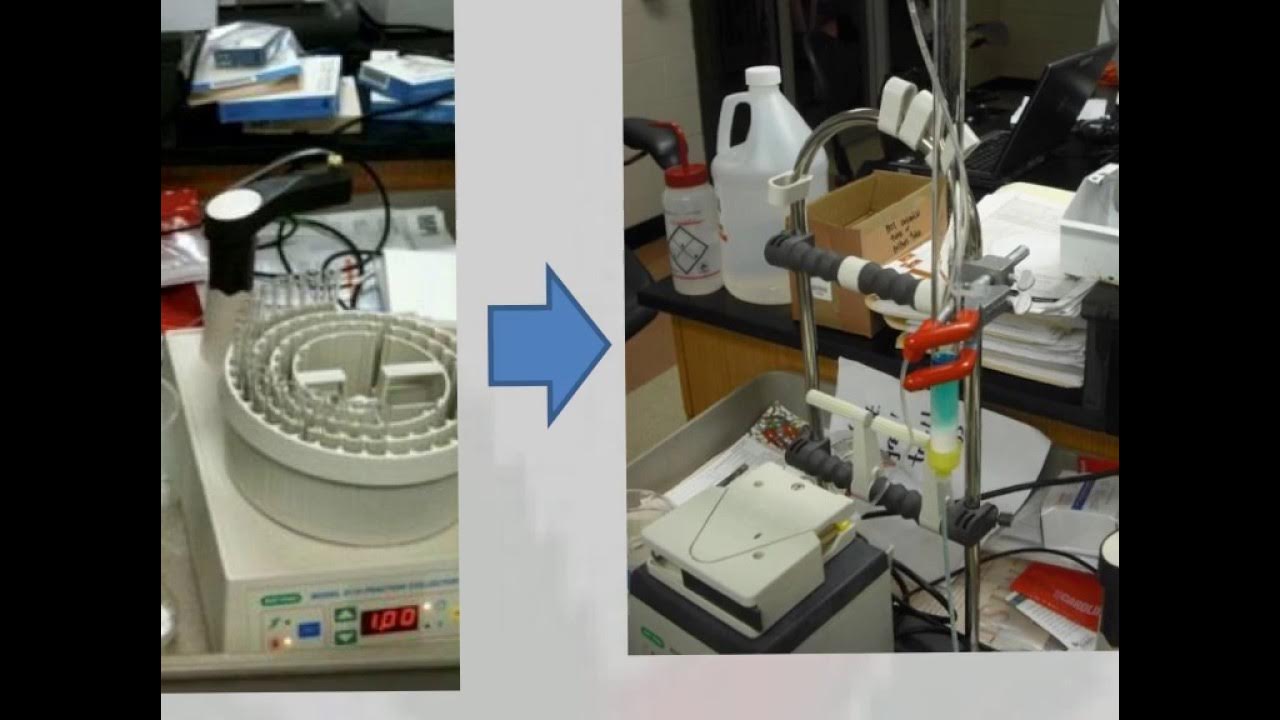Proses Identifikasi Senyawa Menggunakan Kromatografi Gas
Summary
TLDRThis video provides an in-depth explanation of gas chromatography, a key technique in chemical analysis used for separating and identifying chemical compounds in complex samples. It covers the principles of separation based on the distribution of analytes between the stationary and mobile phases, the components of a gas chromatograph (injector, carrier gas, column, and detector), and the process of sample injection, separation, and detection. The video also explains how chromatograms are used for both qualitative and quantitative analysis, helping to identify compounds based on retention time and area measurements.
Takeaways
- 😀 Gas Chromatography (GC) is a widely used chemical analysis technique for separating and identifying volatile compounds in complex samples.
- 😀 The process of gas chromatography relies on the difference in distribution of analytes between the stationary phase and the moving phase (carrier gas).
- 😀 The main components of a GC system include the injector, carrier gas, column, detector, and recorder.
- 😀 The injector transfers the sample into the carrier gas stream, and it can be done manually or automatically using an autosampler.
- 😀 The carrier gas, typically inert gases like helium or nitrogen, transports the sample through the column.
- 😀 The column, which may be inside an oven, is where separation occurs, and it contains a stationary phase that interacts with the analytes.
- 😀 Common stationary phases in GC columns include microscopic liquid layers or polymers on a solid support.
- 😀 The detector identifies separated compounds, with the flame ionization detector (FID) being one of the most commonly used.
- 😀 After separation, the compounds are detected and converted into electrical signals, which are then processed into a chromatogram.
- 😀 Qualitative analysis in GC involves comparing retention times of samples with known standards, while quantitative analysis involves measuring peak areas or heights in the chromatogram.
- 😀 Gas chromatography is essential in fields such as chemical analysis, quality control, and purity testing due to its ability to separate and analyze complex mixtures efficiently.
Q & A
What is gas chromatography used for?
-Gas chromatography is used for separating and analyzing chemical compounds in complex samples that can vaporize without decomposing. It is commonly applied to test the purity of compounds or to separate different components within a mixture.
What are the main components of a gas chromatography instrument?
-The main components of a gas chromatography instrument include the injector, carrier gas, column, detector, and recorder/software.
How does the gas chromatography separation process work?
-The separation process works based on the different affinities of compounds towards the stationary phase (column) and the mobile phase (carrier gas). Compounds interact with the stationary phase at different rates, causing them to move through the column at different speeds and separate.
What role does the injector play in gas chromatography?
-The injector delivers the sample into the chromatographic system, where it is then carried by the carrier gas through the column for separation.
What is the function of the carrier gas in gas chromatography?
-The carrier gas, often an inert gas like helium or nitrogen, transports the sample through the column during the separation process.
What is the stationary phase in gas chromatography?
-The stationary phase is the material inside the column, which interacts with the sample components to cause their separation. It can be a microscopic liquid layer or a polymer on a solid support.
What is a chromatogram, and how is it obtained?
-A chromatogram is a graphical representation of the separation process, showing the detected compounds and their retention times. It is obtained by processing the electrical signals from the detector through a recorder or computer software.
What is the most commonly used detector in gas chromatography?
-The most commonly used detector in gas chromatography is the flame ionization detector (FID), which detects the presence of organic compounds by converting their chemical properties into an electrical signal.
How are retention times important in gas chromatography?
-Retention times are crucial for identifying compounds in a sample. Each compound in the sample exits the column at different times, and by comparing these times to standards, qualitative analysis can be performed.
What types of columns are used in gas chromatography?
-There are three main types of columns used in gas chromatography: packed columns, capillary columns, and preparative columns.
Outlines

This section is available to paid users only. Please upgrade to access this part.
Upgrade NowMindmap

This section is available to paid users only. Please upgrade to access this part.
Upgrade NowKeywords

This section is available to paid users only. Please upgrade to access this part.
Upgrade NowHighlights

This section is available to paid users only. Please upgrade to access this part.
Upgrade NowTranscripts

This section is available to paid users only. Please upgrade to access this part.
Upgrade NowBrowse More Related Video
5.0 / 5 (0 votes)





